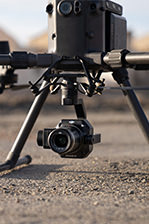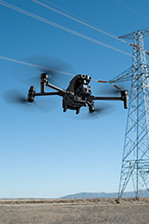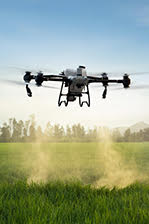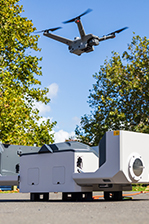DJI Neo Motion Fly More Combo
|
135 g, Light and Portable |
Palm Takeoff & Landing |
AI Subject Tracking, QuickShots |
|
Multiple Control Options |
4K Ultra-Stabilised Video |
Full-Coverage Propeller Guards |
|
Immersive Flight Experience |
Ready to Use |
1080p Ultra-Wide Screen |
|
DJI O4 Video Transmission |
AR Cursor |
2.7-Hour Max Operating Time |
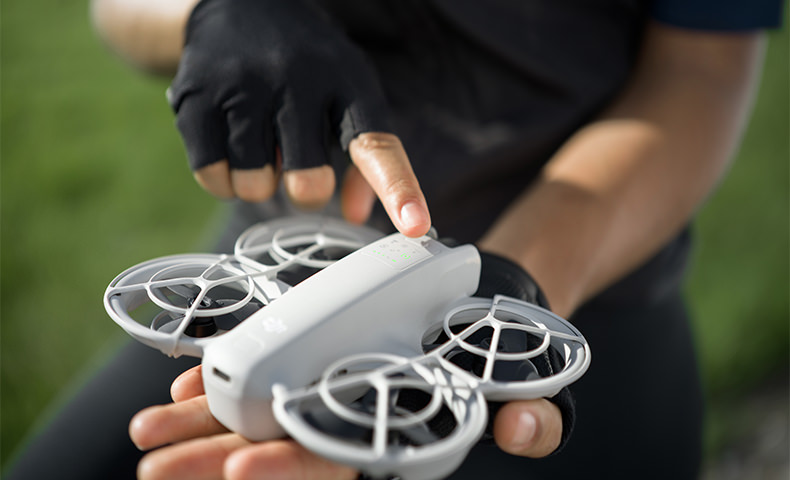
Rise and Shine
At 135 g, DJI Neo is DJI's lightest and most compact drone to date. Takeoff and land on your palm effortlessly without a remote controller, and capture cinematic footage with YOU in focus. Soar through breathtaking scenery, indoors and out, and be sure to include everybody in a group photo. Enjoy a fresh perspective on everyday life with DJI Neo.
From Your Hand to the Sky—Palm Takeoff
DJI Neo gracefully takes off and lands from your palm. Simply press the mode button on Neo, select your desired shooting mode, and Neo automatically does the rest to capture impressive footage, all without a remote controller!
Take Centre Stage With AI Subject Tracking
Whether you're cycling, skateboarding, or hiking, Neo keeps pace as your personal photographer and ensures you are always in the spotlight. Equipped with AI algorithms, Neo can follow the subject within the frame, so you can set up captivating follow shots with ease.
Spark Creativity With QuickShots
With just a flick of your finger, let DJI Neo automatically film for you. DJI Neo offers six intelligent shooting modes, providing a dynamic range of angles to elevate your creative footage.
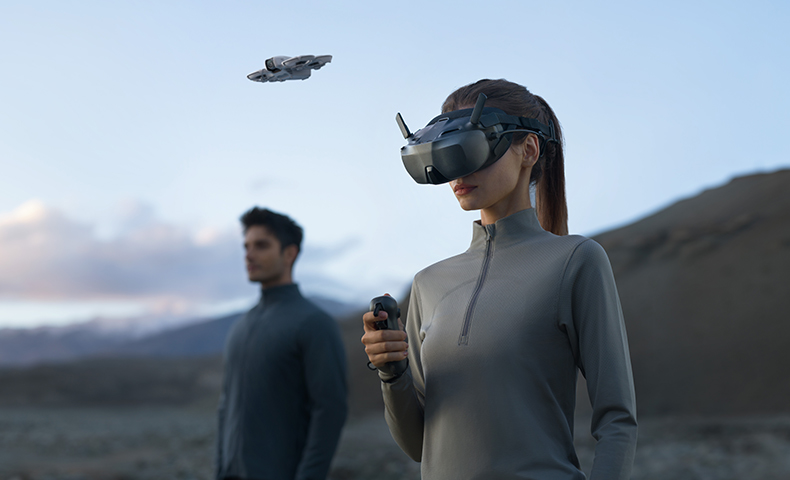
Embrace the Pilot's Perspective
When paired with DJI Neo and DJI RC Motion 3, DJI Goggles N3 lets you enjoy an immersive flight experience, as if you were in the pilot seat. Activate the head tracking function to control Neo with head or wrist movements, achieving seamless synergy between you and your drone. Easily unlock the aerial acrobatics of Neo, and let Goggles N3 immerse you in the thrilling experience of 360° front/back flips, left/right rolls, and 180° drifts.
DJI Goggles N3 key features
One-Tap Defogging: The Goggles N3's defogging function effectively controls moisture by accelerating the internal fan speed to swiftly circulate air, making it ideal for changing temperatures and high-humidity conditions.
1080p Ultra-Wide Screen: DJI Goggles N3 has a full 1080p 60Hz LCD screen and an impressive 54° FOV.
O4 FHD Video Transmission, Ultra-Low Latency, Stable Video Transmission: With a 2T4R antenna design, you get exceptional anti-interference performance and 1080p/60fps live feeds with a minimum latency of 31 ms and a transmission range of up to 13 km.
Smooth Flight, Powerful Operating Time, AR Cursor: DJI RC Motion 3 can be used as an AR cursor before the aircraft takes off, or when the aircraft is braking or hovering.
Real-Time Live Feed Sharing: Connect DJI Goggles N3 to your smartphone using a USB-C cable, and you can display a secondary live feed through the DJI Fly app.
Panorama Video Playback: Import panoramic videos onto a microSD card, and watch them through DJI Goggles N3.
2.7-Hour Operating Time: A fully charged DJI Goggles N3 can last through the use of up to 13 DJI Neo batteries.
Multiple Control Methods
Compact yet capable, DJI Neo flies with style. It not only supports controller-free aerial filming but can also be paired with the DJI Fly app, remote controllers, RC Motion, DJI Goggles N3, and more for increased flight and camera control.
Voice Control
"Hey Fly"- Wake the DJI Fly App with these words to enable voice control and pilot DJI Neo with spoken flight directives.
Mobile App Control
DJI Neo supports Wi-Fi connection to smartphones, eliminating the need for an additional remote controller. Control Neo using virtual joysticks on the DJI Fly app interface, with a control range of up to 50 metres. The app also allows you to set the tracking angle and distance, giving you the freedom to shoot from afar or up close as you please.
Immersive Motion Control
DJI Neo can be paired with DJI Goggles N3, RC Motion 3, or FPV Remote Controller 3, with a video transmission distance of up to 10 kilometres. When used with RC Motion 3, DJI Neo masters the art of one-press aerobatics, seamless indoor navigation; deftly manoeuvring through tight spaces* with ease. The palm-sized DJI Neo is flexible and agile in the air, making it the perfect companion for honing your skills in Manual mode.
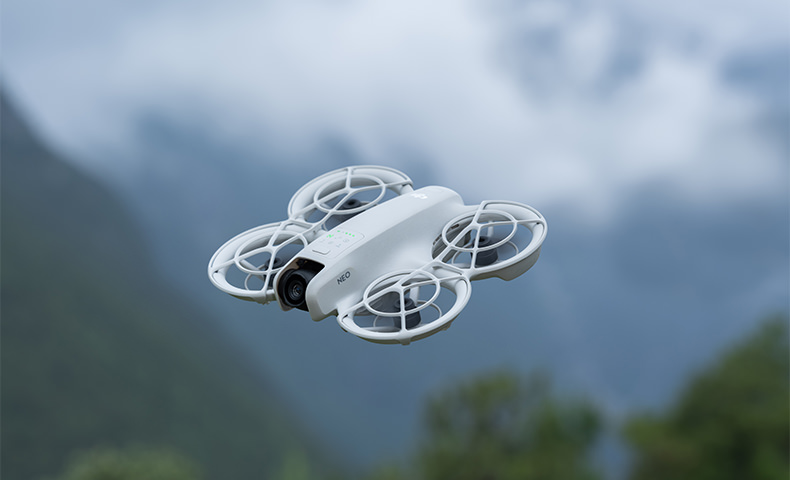
Uncompromised Image Quality
DJI Neo sports a 1/2-inch image sensor for snapping 12MP stills. Combined with DJI's powerful stabilisation algorithms, it can produce 4K UHD stabilised videos straight out of the camera.
4K Ultra HD Video
DJI Neo supports multiple resolutions and frame rates for video recording and up to 4K/30fps RockSteady/Horizon Balancing videos that maintain clarity in both highlight and shadow areas, ensuring rich detail is visible.
Stabilisation Features for Steady Imagery
DJI Neo is equipped with a single-axis mechanical gimbal, combined with RockSteady and HorizonBalancing stabilisation, and it is capable of handling high-speed or large-amplitude flight, as well as up to Level-4 wind conditions. The stabilisation algorithms significantly reduce overall image shakes and corrects horizon tilt within ±45°, for smooth and stable footage.
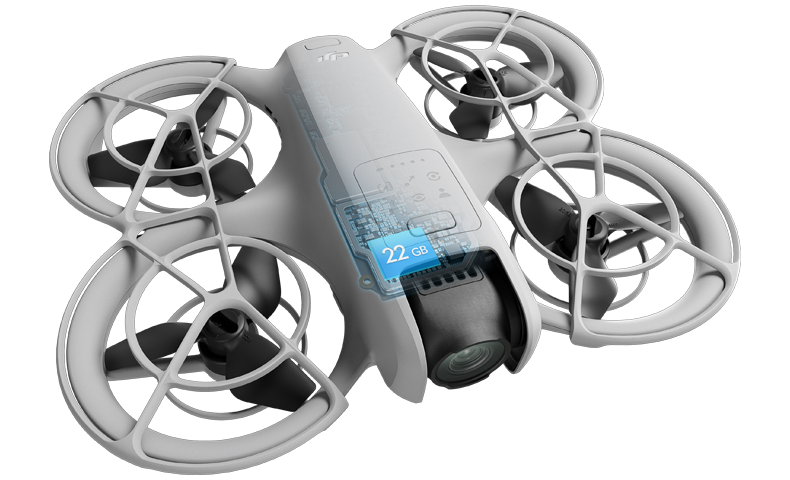
Content Create With Ease
22GB Internal Storage
DJI Neo can store up to 40 minutes of 4K/30fps video or 55 minutes of 1080p/60fps video, allowing you to keep all your memories stored.
Record Sound Wirelessly
After linking with the DJI Fly app, DJI Neo records audio through DJI Mic 2, which can be connected to your mobile phone via Bluetooth or directly through the phone's built-in microphone. The DJI Fly app can also automatically eliminate propeller noise and merge your audio track with your footage to ensure clear sound even when shooting low-altitude vlogs.
High-Speed QuickTransfer
No data cable needed! After connecting to your phone via Wi-Fi, the footage filmed by DJI Neo can be quickly transferred to the DJI Fly app. Transfer instantly after filming, making post-production and sharing smoother.
One-Tap Glamour
Ensure you always look your best and shine with confidence by adding Glamour Effects. Just import footage into the DJI Fly app to get started.
Editing Made Easy
The DJI Fly app offers a vast selection of templates and sound effects for quick and easy editing. Create and share videos efficiently without needing to download the footage to edit, saving storage space on your phone.
Stable Flight, Impressive Battery Life
Using an infrared and monocular vision positioning system, DJI Neo can hover steadily in the air, maintaining stability even in wind conditions up to Level 4. It also supports automatic Return to Home (RTH) for convenient, worry-free operation.
Return to Home (RTH)
Don't worry about returning home, for palm takeoff/landing or mobile app control, Neo will return to the takeoff point after completing its course. When using a remote controller or immersive motion control, Neo supports Return to Home (RTH) and Failsafe RTH, for effortless navigation back to you.
Level-4 Wind Resistance
18-Min Flight Time
With 18 minutes of flight time, DJI Neo can perform over 20 excursions to and from your palm in succession, documenting life's little moments with its sleek design that doesn't skimp on flight duration.
Direct Charging, Quick Power Replenishment
Connect the aircraft directly to a power source using a Type-C data cable for convenient charging. Additionally, DJI Neo's Two-Way Charging Hub can charge three batteries simultaneously, increasing both charging speed and efficiency.
Product Specifications
DJI Neo
Aircraft
Takeoff Weight: Approx. 135 g
Dimensions: 130×157×48.5 mm (L×W×H)
Max Ascent Speed: 0.5 m/s (Cine mode)
2 m/s (Normal mode)
3 m/s (Sport mode)
Max Descent Speed: 0.5 m/s (Cine mode)
2 m/s (Normal mode)
2 m/s (Sport mode)
Max Horizontal Speed (near sea level, no wind): 6 m/s (Normal mode)
8 m/s (Sport mode)
16 m/s (Manual mode)
Max Takeoff Altitude: 2000 m
Measured in a windless environment when taking off from an altitude of 2000 m and ascending vertically by 120 m, using Sport mode, and from 100% battery level until 20%. Data is for reference only. Always pay attention to reminders on the camera view during your flight.
Max Flight Time: Approx. 18 mins (approx. 17 mins with the Propeller Guards)*
Each battery allows the drone to perform at least 20 palm takeoff and landing for shoots in succession**
* Measured when flying forward at a speed of 2 m/s in a windless environment 20 m above sea level, with camera parameters set to 1080p/30fps, video mode off, and from 100% battery level until 0%. Results may vary depending on the environment, actual use, and firmware version.
** Measured after DJI Neo is activated, with a fully charged battery and default settings, and using Circle, Rocket, and Dronie modes, and is for reference only.
Max Hovering Time: Approx. 18 mins (approx. 17 mins with the Propeller Guards)
Measured when hovering in a windless environment 20 m above sea level, with camera parameters set to 1080p/30fps, video mode off, and from 100% battery level until 0%. Results may vary depending on the environment, actual use, and firmware version.
Max Flight Distance: 7 km
Measured when flying forward at a speed of 8 m/s in a windless environment 20 m above sea level, with camera parameters set to 1080p/30fps, video mode off, and from 100% battery level until 0%. Results may vary depending on the environment, actual use, and firmware version.
Max Wind Speed Resistance: 8 m/s (Level 4)
Operating Temperature: -10° to 40° C (14° to 104° F)
Global Navigation Satellite System: GLONASS + GPS + Galileo + BeiDou
Hovering Accuracy Range: Vertical:
±0.1 m (with vision positioning)
±0.5 m (with GNSS positioning)
Horizontal:
±0.3 m (with vision positioning)
±1.5 m (with GNSS positioning)
Internal Storage: 22 GB
Class: C0 (EU)
Camera
Image Sensor: 1/2-inch image sensor
Lens: FOV: 117.6°
Format Equivalent: 14 mm
Aperture: f/2.8
Focus: 0.6 m to ∞
ISO Range: 100-6400 (Auto)
100-6400 (Manual)
Shutter Speed: Video: 1/8000-1/30 s
Photo: 1/8000-1/10 s
Max Image Size: 12 MP Photo
4000×3000 (4∶3)
4000×2256 (16∶9)
Still Photography Modes: Single/Timed Shot
Photo Format: JPEG
Video Resolution: EIS Off:
4K (4:3): 3840×2880@30fps
1080p (4:3): 1440×1080@60/50/30fps
EIS On:
4K (16:9): 3840×2160@30fps
1080p (16:9): 1920×1080@60/50/30fps
Video Format: MP4
Max Video Bitrate: 75Mbps
Supported File System: exFAT
Color Mode: Normal
EIS: Supports RockSteady, HorizonBalancing, and turning stabilization off.*
* When using a 16:9 aspect ratio, only RockSteady or HorizonBalancing can be enabled. Stabilization is not available in 4:3 aspect ratio. When stabilization is turned off, footage captured supports offline stabilization with Gyroflow.
Gimbal
Stabilization: Single-axis mechanical gimbal (tilt)
Mechanical Range: Tilt: -120° to 120°
Controllable Range: Tilt: -90° to 60°
Max Control Speed (tilt): 100°/s
Angular Vibration Range: ±0.01°
Image Roll Correction: Supports correction of footage recorded on the drone
Live view correction is unavailable only when using with goggles
Sensing
Sensing Type: Downward visual positioning
Downward: Precise Hovering Range: 0.5-10 m
Operating Environment: Downward:
Non-reflective, discernible surfaces with diffuse reflectivity of >20% (such as walls, trees, or people)
Adequate lighting (lux > 15, normal indoor lighting conditions)
Video Transmission
Video Transmission System: O4
Live View Quality: With DJI RC-N3 Remote Controller: Up to 1080p/30fps
With DJI Goggles 3 plus DJI RC Motion 3/DJI FPV Remote Controller 3: Up to 1080p/60fps
Operating Frequency: 2.400-2.4835 GHz
5.170-5.250 GHz
5.725-5.850 GHz
Operating frequency allowed varies among countries and regions. Please refer to local laws and regulations for more information.
Transmitter Power (EIRP): 2.4 GHz:
<26 dBm (FCC)
< 20 dBm (CE/SRRC/MIC)
5.1 GHz:
< 23 dBm (CE)
5.8 GHz:
<26 dBm (FCC)
< 14 dBm (CE)
< 26 dBm (SRRC)
Communication Bandwidth: Max 40 MHz
Max Transmission Distance (unobstructed, free of interference): FCC: 10 km
CE: 6 km
SRRC: 6 km
MIC: 6 km
The data was measured in an unobstructed outdoor environment free of interference and showed the farthest communication range for one-way, non-return flights under each standard. The maximum video transmission distance in the actual flight scenarios is limited by the drone's maximum flight distance. Always pay attention to RTH reminders on the live view during your flight.
"Max Transmission Distance (unobstructed, with interference): Strong Interference (urban landscape): Approx. 1.5-3 km
Medium Interference (suburban landscape): Approx. 3-6 km
Low Interference (suburb/seaside): Approx. 6-10 km
Data tested under FCC standard in unobstructed environments with typical interference. Used for reference purposes only and provides no guarantee for actual flight distance.
Max Transmission Distance (obstructed, with interference): Low Interference and Obstructed by Buildings: Approx. 0-0.5 km
Low Interference and Obstructed by Trees: approx. 0.5-3 km
Data tested under FCC standard in environments with typical low interference. Used for reference purposes only and provides no guarantee for actual transmission distance.
Max Download Speed: Wi-Fi: 25 MB/s
Measured in a laboratory environment with little interference in countries/regions that support both 2.4 GHz and 5.8 GHz. Download speeds may vary depending on the actual conditions.
Lowest Latency: With DJI RC-N3 Remote Controller: Approx. 120 ms
Depending on the actual environment and mobile device.
Max Video Bitrate: 50Mbps
Antennas: Two antennas, 1T2R
Wi-Fi:
Protocol: 802.11a/b/g/n/ac
Operating Frequency: 2.400-2.4835 GHz
5.725-5.850 GHz
Operating frequency allowed varies among countries and regions. Please refer to local laws and regulations for more information.
Transmitter Power (EIRP): 2.4 GHz:
< 20 dBm (FCC/CE/SRRC/MIC)
5.8 GHz:
<20 dBm (FCC/SRRC)
<14 dBm (CE)
Effective Operating Range: 50 m
Tested in an outdoor open environment free of interference. The video transmission distance varies by operating environment.
Bluetooth
Protocol: Bluetooth 5.1
Operating Frequency: 2.400-2.4835 GHz
Operating frequency allowed varies among countries and regions. Please refer to local laws and regulations for more information.
Transmitter Power (EIRP): < 10 dBm
Battery
Capacity: 1435 mAh
Weight: Approx. 45 g
Nominal Voltage: 7.3 V
Max Charging Voltage: 8.6 V
Type: Li-ion
Energy: 10.5 Wh
Charging Temperature: 5° to 40° C (14° to 104° F)
Charging Time: When Using the Two-Way Charging Hub (60W max charging power): Approx. 60 minutes to charge three batteries simultaneously from 0% to 100%
When Directly Charging the Aircraft Body (15W max charging power): Approx. 50 minutes to charge from 0% to 100%
Charger
Recommended Charger: DJI 65W Portable Charger
USB Power Delivery charger
Battery Charging Hub
Input: 5 V, 3 A
9 V, 3 A
12 V, 3 A
15 V, 3 A
20 V, 3 A
Output (charging): 5 V, 2 A
Charging Type: 3 batteries charged simultaneously
The number of batteries that can be charged simultaneously depends on the power of the charger used. Using a charger of more than 45 W allows for charging three batteries at once while using a charger of less than 45 W can only charge two batteries simultaneously. Refer to the charging protocols supported by the charger.
Compatibility: DJI Neo Intelligent Flight Battery
Storage
Recommended microSD Cards: Does not support storage expansion with an external SD card
DJI Goggles N3
Model: TKGSM
Weight: Approx. 536 g (battery and headband included)
349 g (battery and headband excluded)
Dimensions: With antennas folded: 193×163×103 mm (L×W×H)
With antennas unfolded: 206×163×132 mm (L×W×H)
Screen Size (single screen): 3.5 inches
Resolution (single screen): 1920×1080
Refresh Rate: Up to 60 Hz
Interpupillary Distance Range: No interpupillary distance adjustment required, ready to use immediately.
Diopter Adjustment Range: Diopter adjustment not supported, can be used with personal glasses.
FOV (single screen): 54°
Video Recording Format: MOV (video format: H.264)
Supported Video and Audio Playback Formats: MP4, MOV (video coding formats: H.264, H.265; audio formats: AAC, PCM)
Panoramic Video: Spherical 2D panoramic videos
Max Video Specification: 4K/60fps
Real View Display: Real View not supported.
Operating Temperature: -10° to 40° C (14° to 104° F)
Power Input: Built-in battery
Supported SD Cards: microSD (up to 512 GB)
Recommended microSD Cards: Lexar Professional 1066x 64GB U3 A2 V30 microSDXC
Lexar Professional 1066x 128GB U3 A2 V30 microSDXC
Lexar Professional 1066x 256GB U3 A2 V30 microSDXC
Lexar Professional 1066x 512GB U3 A2 V30 microSDXC
Kingston CANVAS Go! Plus 64GB U3 A2 V30 microSDXC
Kingston CANVAS Go! Plus 128GB U3 A2 V30 microSDXC
Kingston CANVAS Go! Plus 256GB U3 A2 V30 microSDXC
Kingston CANVAS Go! Plus 512GB U3 A2 V30 microSDXC
Video Transmission
Video Transmission: O4
Operating Frequency: 2.400-2.4835 GHz
5.150-5.250 GHz
5.725-5.850 GHz
Operating frequency allowed varies among countries and regions. Refer to local laws and regulations for more information.
Transmitter Power (EIRP): 2.4 GHz:
< 30 dBm (FCC)
< 20 dBm (CE/SRRC/MIC)
5.1 GHz:
< 23 dBm (CE)
< 21 dBm (FCC)
5.8 GHz:
< 33 dBm (FCC)
< 30 dBm (SRRC)
< 14 dBm (CE)
Latency: With DJI Avata 2:
1080p/100fps video transmission quality: Minimum 31 ms
With DJI Neo:
1080p/60fps video transmission quality: Minimum 58 ms
Measured in an open, outdoor environment without interference or obstructions. Actual data varies with different drone models.
Max Transmission Distance: With DJI Avata 2:
13 km (FCC)
10 km (CE/SRRC/MIC)
With DJI Neo:
10 km (FCC)
6 km (CE/SRRC/MIC)
Measured in an open, outdoor environment without interference or obstructions and represents the farthest communication range under each standard. The actual max transmission distance during flight is limited by the drone's max flight distance. Always pay attention to RTH reminders on the live view during your flight.
Max Video Bitrate: With DJI Avata 2: 60 Mbps
With DJI Neo: 50 Mbps
Measured in an open, outdoor environment without interference or obstructions. Actual data varies with the operating environment.
GFSK
Operating Frequency: 2.400-2.4835 GHz
Transmitter Power (EIRP): < 26 dBm (FCC)
< 20 dBm (CE/SRRC/MIC)
Battery
Dimensions: 120×71×44 mm (L×W×H)
Capacity: 2450 mAh
Voltage: 6.33-8.4 V
Type: Li-ion
Chemical System: LiNiMnCoO2
Energy: 17.28 Wh
Charging Temperature: 5° to 45° C (41° to 113° F)
Max Charging Power: 5 V/3 A (charging when powered off)
Runtime: 2.7 hours
The 2.7-hour max operating time was measured at an ambient temperature of 25° C (77° F), screen brightness at 6, connected to the DJI Avata 2 aircraft, video transmission set to 1080p/100fps, Head Tracking off, and the goggles' battery fully charged and not supplying power to external devices such as smartphones.
In the box
DJI Neo Aircraft × 1
DJI Neo Intelligent Flight Battery × 3
DJI Neo Two-Way Charging Hub × 1
DJI Neo Propeller Guard (Pair) × 1
DJI Neo Spare Propellers (Pair) × 1
DJI Neo Spare Propeller Screw × 4
Screwdriver × 1
DJI Neo Gimbal Protector × 1
Documents (Quick Start Guide, Safety Guidelines, and DJI Logo Stickers) × 1
DJI RC Motion 3 × 1
Lanyard × 1
DJI Goggles N3 × 1
DJI Goggles N3 Foam Padding × 1
WHY BUY FROM US?
By buying from Ferntech, you'll have the confidence that you are dealing directly with New Zealand's leading drone experts. Our staff are knowledgable drone pilots who offer expert advice, trusted support and superior specialist service. Only through us will you receive a full New Zealand warranty, phone and email support, and access to our certified Repairs Centre with DJI-qualified drone technicians. And we guarantee that we will have the best prices on the market — if not let us know and we will match any price (conditions apply).
Warranty Details
DJI Neo
Compared to other consumer drones, what sets DJI Neo apart?
To date, DJI Neo is DJI's lightest, smallest, safest, easiest-to-use drone with the most control options. It's ideal for low-altitude filming and close-range human subject follow shots.*
1. DJI Neo is palm-sized, weighing approx. 135 g, making it easy to store and carry. It features fully enclosed propeller guards, ensuring safe flight.
2. DJI Neo is instantly intuitive. Press the Mode button on the top of the drone to quickly switch between intelligent shooting modes and initiate palm takeoff without needing to connect a remote controller and learn the operations.
3. DJI Neo offers multiple fun control methods. It can take off and land on your palm** without a remote controller. It also supports traditional drone control and immersive first-person view (FPV) flight experience.
4. DJI Neo excels at low-altitude flights and close-range follow shots (human subjects), making it a great personal videographer. It can also fly close to the ground or navigate indoors,*** providing a unique and immersive experience.
*As of September 2024.
** When using palm takeoff and landing, adhere to the following guidelines: Operate in a windless environment as much as possible; extend your palm horizontally and keep it still. Avoid contact with the propellers to prevent injury; do not attempt to grab the drone while it is flying.
*** DJI Neo does not support obstacle avoidance. To ensure flight safety, fly within a visual line of sight. To fly beyond visual line of sight (BVLOS), ensure that the aircraft is in good condition, the user is qualified, and the flight is compliant with local regulations for BVLOS.
Who is DJI Neo suitable for?
DJI Neo is a vlogging drone ideal for capturing everyday life, leisure activities, family moments, and pets.
If you need a portable drone to instantly capture travel, camping, cycling, skateboarding, hiking, or important memories, DJI Neo is the perfect choice.
DJI Neo is suitable for users aged 16 and above.
What control methods does DJI Neo support?
DJI Neo supports palm control, mobile app control, voice control, remote controller control,* and immersive motion control.*
* Requires purchase of a specific combo or separate purchase of a specific remote controller and goggles.
What intelligent shooting modes does DJI Neo offer?
DJI Neo offers a range of intelligent shooting modes.
For palm control or mobile app control, DJI Neo supports Follow, Dronie, Circle, Rocket, Spotlight, and Custom* modes.
When controlling with a standard remote controller, DJI Neo supports multiple QuickShots modes.
* After activating DJI Neo, the default Custom mode is DirectionTrack. Neo can connect to the DJI Fly app via Wi-Fi to select Helix or Boomerang.
Which remote controllers are compatible with DJI Neo?
DJI RC 2, DJI RC-N3 Remote Controller, DJI RC-N2 Remote Controller, DJI RC Motion 3, and DJI FPV Remote Controller 3.
Which goggles are compatible with DJI Neo?
DJI Goggles 3.
For a smoother first-person view (FPV) experience, it is recommended to use DJI Goggles 3 and select 1080p@60/50fps for video recording.
How user-friendly is DJI Neo's palm control?
Palm control is extremely simple to use. Even those with no drone experience can get started quickly.
DJI Neo can take off and land from and onto your palm and perform intelligent filming by locking onto the subject using visual algorithms,* all without the need for a remote controller or any auxiliary device.
* Currently, only human subject tracking is supported; tracking other subjects is not available.
Can DJI Neo's intelligent tracking reliably follow me?
Once DJI Neo locks onto you using visual algorithms, it will follow your movement trajectory and maintain a consistent speed with you,* achieving intelligent follow shots.
* The maximum tracking speed is 6 m/s.
Does DJI Neo support Manual mode control?
Yes. DJI Neo can be used as an entry-level drone for Manual mode. It is suitable for practicing throttle control, altitude maintaining, and level flight, but not for continuous high-speed flight and high-maneuverability actions such as Dive, Split-S, Power Loop, and Yaw-Spin.
Exercise caution when flying in M mode.
Does DJI Neo support obstacle avoidance?
No. To ensure flight safety, fly in an open area or within a visual line of sight. To fly beyond visual line of sight (BVLOS), ensure that the aircraft is in good condition, the user is qualified, and the flight is compliant with local regulations for BVLOS.
How is DJI Neo's camera performance?
DJI Neo offers 4K Ultra HD quality that meets everyday filming and sharing needs.
For video recording, DJI Neo provides resolutions of 4K/30fps and 1080p@60/50/30fps, meeting the high-definition requirements for sharing content on mainstream social media platforms.
DJI Neo supports up to 12-megapixel photos. When using mobile app control, it ensures everyone fits into group shots, eliminating the need to find someone to take the picture.
What image stabilization technologies does DJI Neo support?
It supports RockSteady and HorizonBalancing.
When controlling Neo with the DJI Fly app or a standard remote controller, RockSteady and HorizonBalancing are enabled simultaneously and cannot be turned off.
For immersive motion control, you can choose to enable RockSteady, HorizonBalancing, or turn off stabilization.
For palm control and mobile app control, the HorizonBalancing angle is ±30°. When controlling the drone with a remote controller or using motion control, the HorizonBalancing angle is ±45°.
Does DJI Neo support Gyroflow for offline stabilization?
Yes. When using the 4:3 aspect ratio, footage recorded by DJI Neo is not stabilized but supports offline stabilization with Gyroflow.
How do I transfer files from DJI Neo to a smartphone/computer?
QuickTransfer:
DJI Neo supports connecting to a mobile phone via Wi-Fi and browsing/transferring footage through the DJI Fly app, with a maximum download speed of up to 25 MB/s.*
Keep the drone and phone within 2 meters with no obstructions for the best transfer experience.
Transferring files to a computer:
Without needing to power on Neo, connect the drone to the computer using a data cable to browse and transfer footage.
* Measured in a laboratory environment with little interference in countries/regions that support both 2.4 GHz and 5.8 GHz. Download speeds may vary depending on the actual conditions.
What functions can be achieved after connecting DJI Neo with the DJI Fly app?
After connecting DJI Neo with the DJI Fly app, you can check live feeds of the drone, adjust shooting parameters, and quickly transfer footage to your mobile phone.
You can also use the phone's built-in microphone for audio recording or control the drone via voice commands.
Once the footage captured by DJI Neo is imported into the DJI Fly app, you can add Glamour Effects or quickly edit the footage for instant video creation.
What languages does DJI Neo support for voice control?
English and Mandarin.
The specific language used depends on the connected phone's system language (English or Chinese).
Can the footage captured by DJI Neo use the Sky VFX effects in the LightCut app?
Yes.
What are the charging options for DJI Neo? How long does it take to fully charge?
There are two charging methods: using the Two-Way Charging Hub or charging via the aircraft body.
1. When using a 60W charger with the Two-Way Charging Hub, you can charge up to three batteries simultaneously.* It takes approximately 60 minutes to charge them from 0% to 100%.
2. When using a 30W charger to charge via the aircraft body, it takes about 50 minutes to charge from 0% to 100%.
* The number of batteries that can be charged simultaneously depends on the power of the charger used. Using a charger of more than 45 W allows for charging three batteries at once while using a charger of less than 45 W can only charge two batteries simultaneously. Refer to the charging protocols supported by the charger.
What are the functions of the DJI Neo Two-Way Charging Hub?
1. Charging: The Two-Way Charging Hub supports USB PD fast-charging protocol and can charge up to three batteries simultaneously.
2. Storage: It can store three batteries at once, making it convenient to carry and use.
3. Power bank: With at least one battery in storage, you can use the charging hub as a power bank and output the battery power to mobile phones, tablets, and other devices through the USB-C port.
Which DJI chargers are recommended for DJI Neo?
When charging via the Two-Way Charging Hub, it is recommended to use the DJI 65W Portable Charger.
When charging via the aircraft body, it is recommended to use the DJI 65W Portable Charger or the DJI 30W USB-C Charger.
DJI Goggles N3
What are the main differences compared with other DJI goggles?
Compared with DJI Goggles 3, DJI Goggles N3 offers a more spacious internal design that accommodates personal glasses, allowing users to wear them directly without needing to adjust the diopter or install additional lenses. It also features a single 1080p ultra-wide screen with a 54° field of view, reducing the likelihood of dizziness and providing an immersive visual experience.
Compared with DJI Goggles Integra and DJI Goggles 2, DJI Goggles N3 not only incorporates a single 1080p ultra-wide screen and a ready-to-use design but also features DJI's latest O4 FHD video transmission technology. It offers an extended battery life of up to 2.7 hours* and includes additional features such as AR Cursor** and One-Tap Defogging. It is compatible with more of DJI's latest drones and remote controllers, enhancing the overall user experience.
* The 2.7-hour max operating time was measured at an ambient temperature of 25° C (77° F), screen brightness at 6, connected to the DJI Avata 2 aircraft, video transmission set to 1080p/100fps, Head Tracking off, and the goggles' battery fully charged and not supplying power to external devices such as smartphones.
** This feature requires the DJI RC Motion 3.
Who is this product suitable for?
If you need a lightweight and comfortable pair of goggles that can be worn without removing personal glasses, and you want an immersive flight experience with easy live feed sharing, then the entry-level DJI Goggles N3 is your ideal choice.
Which aircraft and remote controllers are compatible with this product?
DJI Goggles N3 is compatible with DJI Avata 2 and DJI Neo, and must be used in conjunction with the DJI RC Motion 3 or DJI FPV Remote Controller 3.
For a smoother first-person view (FPV) experience, it is recommended to select a shooting frame rate of 50fps or higher.
How do I use this product with astigmatism, nearsightedness, or farsightedness?
You can use DJI Goggles N3 directly while wearing personal glasses or contact lenses. If you are wearing personal glasses, gently open the foam padding of the goggles from both sides before putting them on. For detailed instructions, refer to the user manual.
Does this product support interpupillary distance adjustment?
No.
Can I replace the foam padding?
Yes.
Can this product be charged by third-party power sources?
Yes. Since DJI Goggles N3 has a built-in battery, you can connect it to a power bank through the USB-C port and even use it while charging.
What precautions should be taken when using this product?
When using DJI Goggles N3, keep the lenses away from direct sunlight exposure to avoid irreversible damage.
Does this product support motion control or head tracking?
Yes, but a DJI RC Motion 3 is required.
Does this product support AR Cursor?
Yes, but a DJI RC Motion 3 is required.
Does this product support Real View?
No.
Does this product support real-time live feed sharing?
Yes. The steps are as follows:
1. Use a USB-C to USB-C data cable to connect the USB-C port of the goggles to your smartphone.
2. Open the DJI Fly app and tap GO Fly in the lower right corner to view the live feed on your smartphone.
Does this product support video recording with a memory card installed? What is the resolution and frame rate?
Yes. DJI Goggles N3 can record its screen during the flight (and can include OSD and other information). The resolution is 1920×1080, and the max recording frame rate is 60fps. The recording frame rate adapts automatically based on the camera's set frame rate and cannot be manually adjusted by the user. The specific strategy is as follows:
1. For camera settings of 60fps or lower, the recording will match the camera's frame rate, such as 60, 50, 48, or 30fps.
2. For camera settings higher than 60fps, the recording frame rate will be half of the camera's frame rate. For example, a 100fps camera setting will result in a recording frame rate of 50fps, and a 120fps camera setting will result in a recording frame rate of 60fps.
Can the OSD information displayed on the screen be turned off?
No.
Does this product support analog video transmission?
No.
Does this product support flight simulators?
No.
Does this product support playing videos?
Yes, it supports playing videos from a memory card.
Supported video formats on the memory card: MP4 and MOV (video coding formats: H.264, H.265; audio formats: AAC, PCM).
Does this product support playing panoramic videos and 3D videos?
It supports spherical 2D panoramic videos but does not support 3D videos.
Panoramic videos are supported up to a max resolution of 4K/60fps.
Does this product support playback of photos or videos?
Yes. After inserting a memory card into DJI Goggles N3, you can view photos or videos by opening the Album in the goggles' menu.
Spherical panoramic photos are not supported for viewing.
How can I connect this product to a smartphone or computer?
The goggles support wired connections to smartphones and computers.
Only standard USB-C data cables and MFI-certified Lightning cables are supported. When connecting to a computer, it is recommended to enable OTG Wired Connection to Computer in the goggles' menu under Settings > About to avoid recognition issues. Remember to disable the OTG Wired Connection feature when not connected to a computer to prevent any impact on flight performance. When connecting to a smartphone, it is recommended to use a USB-C to USB-C cable. If the smartphone is not recognized, you can enable OTG Wired Connection to Mobile Device in the goggles' menu under Settings > About to resolve the issue. Remember to disable the OTG Wired Connection feature when not connected to a smartphone to prevent any impact on flight performance.
Does this product support HDMI output or HDMI input?
DJI Goggles N3 does not have an HDMI port and therefore does not support direct HDMI input or output. However, if you have a DJI RC Pro, you can use it to relay the signal. Connect Goggles N3 to the RC Pro via a USB-C to USB-C data cable, and connect the RC Pro to another display device via an HDMI data cable. Then, enable the FPV Live feature in the Settings > Display menu on the RC Pro. Open the DJI Fly app, and you can then get live feeds from Goggles N3 on the connected display device via the RC Pro.
There's currently no reviews for this product, be the first to write one.









